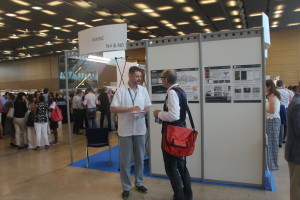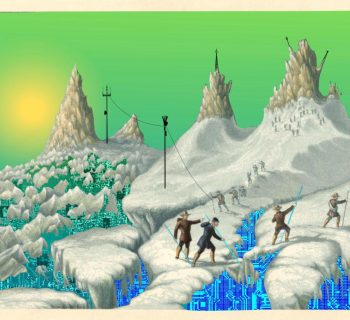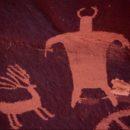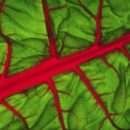 Here is part 3 of this part 5 series.
Here is part 3 of this part 5 series.
These pictures was taken at the 2016 Association of Medical Education in Europe (AMEE) conference in Barcelona, with some 3200 delegates. The EU Learning Layers project had a stand at the conference, organised a bar camp and presented a paper and two posters.
In truth the stand is not a great learning space design. We only had two chairs and only really many visitors in conference coffee breaks and at lunch. But one thing about running an exhibition stand is you never know what people are going to be interested in or what they will ask. In a big project like Learning layers which has some 20 partners and is organised in different work teams developing different applications to support informal learning, it means you have to appreciate and understand the work of others in order to explain it to visitors. And with the barcamp and posters sessions we developed spaces for informal learning within the conference. The bar camp – an unconference session – allowed participants to put forward their own ideas for discussions and exploration in a series of round tables. Participants were active and motivated, unlike the usually passive engagement in formal paper sessions at conferences. I have little experience in medical education. Most of the participants were practitioners in medical education, with many ideas to learn from. I do not really understand why more such sessions are not organised in major conferences. As an aside, conference venues are seldom designed as learning spaces. Rows of chairs facing a presenter at the front hardly inspires interaction and social learning.
I always like the idea of poster sessions. But with some 600 posters at AMEE and proposers given only three minutes to present their papers it really failed to work as a learning space. We are working at the moment on the idea of using technology to enhance the poster sessions at next year’s conference.
But for me the real learning at the conference was from the Learning Layers team. There were eight of us and we rotated in pairs on the exhibition stand. Like many of the big European research projects, Learning Layers in an interdisciplinary project. Partners include social scientists, pedagogists, business science specialists, designers and technical developers. We can learn from each other and from people with a different subject specialism from our own. This happens to an extent in formal project meetings but the time spent on the stand allowed more in depth conversations. And in the course of the three days spent together we bonded as a team.









